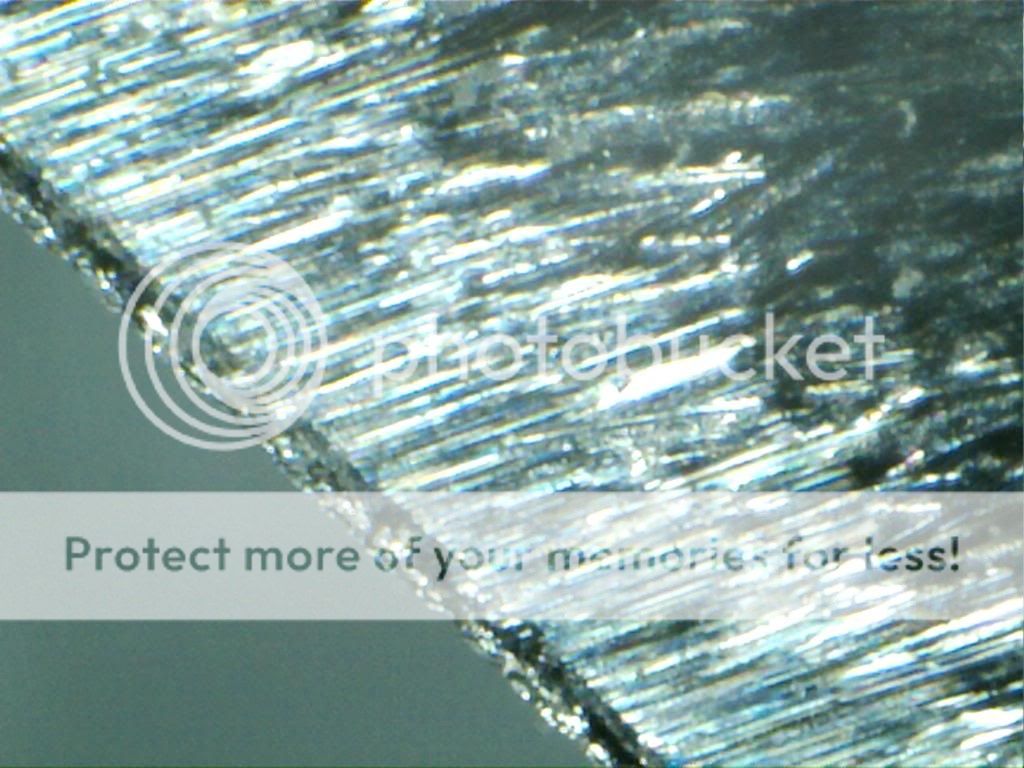- Joined
- Sep 19, 2001
- Messages
- 8,968
Tom Krein sharpened reground knives to 110 or 120 on a belt and the edges pop hairs. Not sure if he finished with a compound loaded belt. The paper wheels loved by many use 220 grit followed by white compound, two steps only. Commercial sharpeners from CATRA, Tru-Hone, Cozzini, Metalform, and Fazzini use the same coarse grit (120, 170, other) in aluminum oxide, cubic boron nitride, diamond, etc. in one step sharpening. 800 C is around where simple steels austenize, so that is too hot. Highly alloyed stainless and of course high speed steels should be good to at least 500 C. 160 C would be a really low temper for a very simple steel kept hard, most knives will be tempered at no less than 200 C. The rest of the blade does act as a heat sink, but the edge itself can still be over heated by sharpening. But even sharpening on a dry bench stone can get the heat to 500 C at the very apex of the edge.



